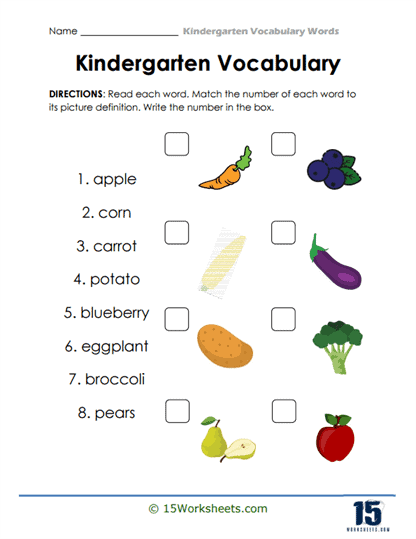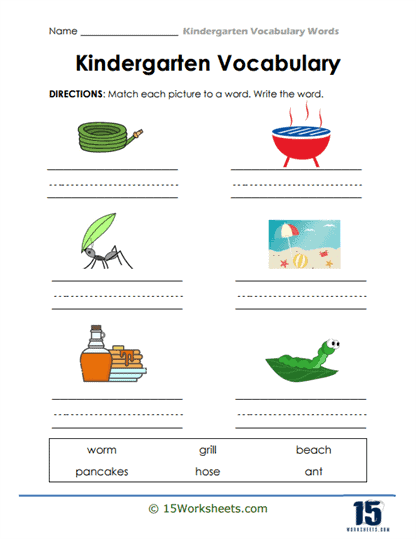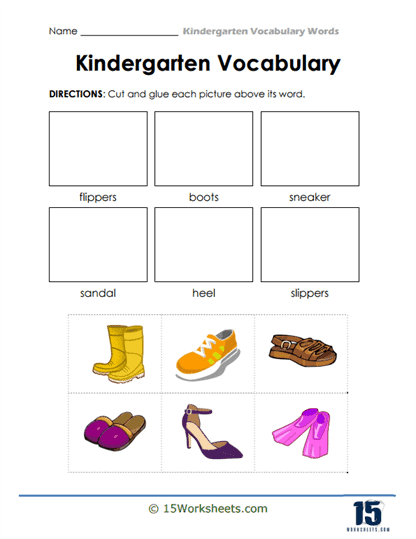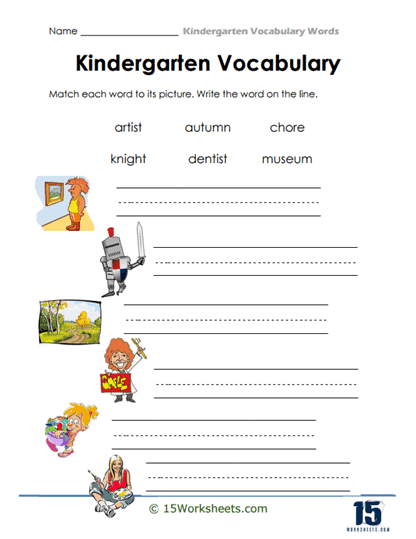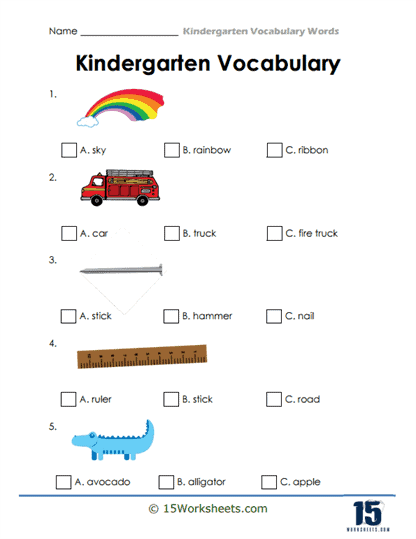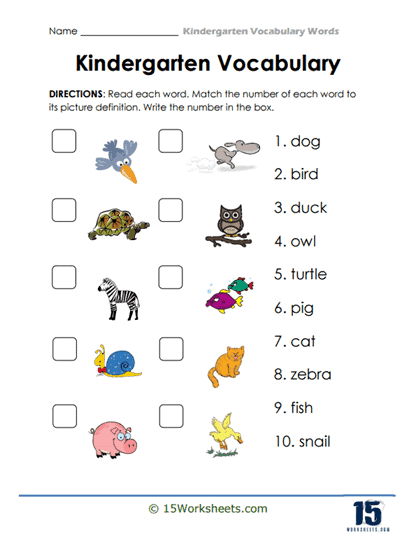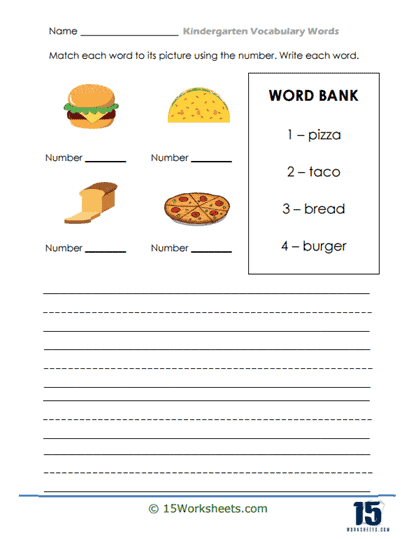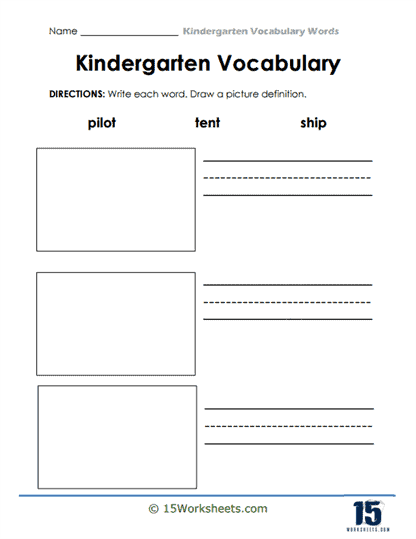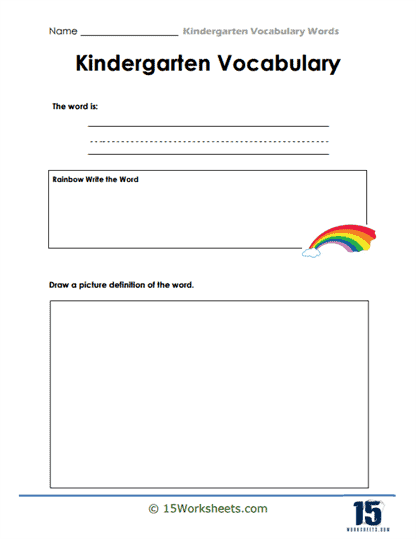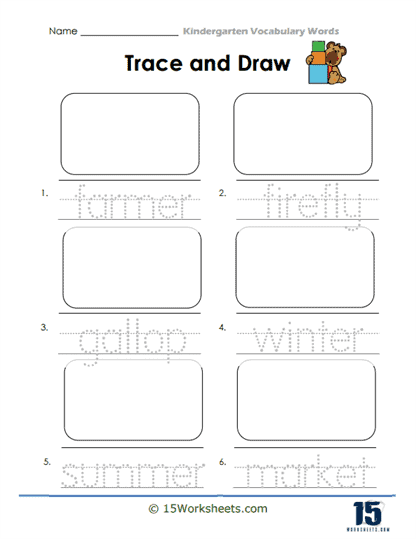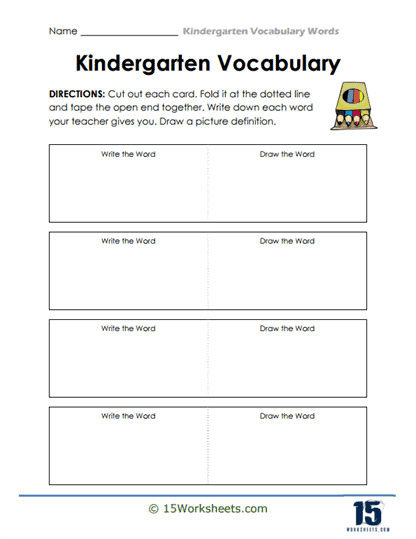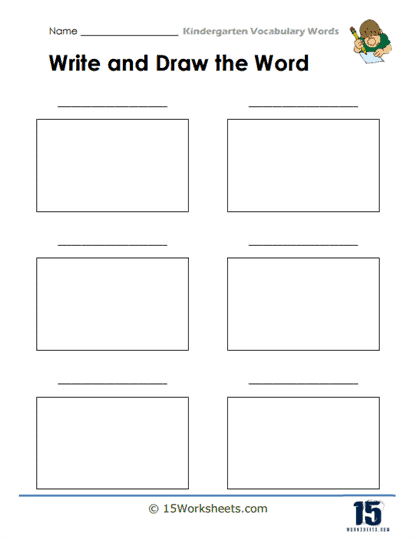Kindergarten Vocabulary Worksheets
About These 15 Worksheets
Kindergarten vocabulary worksheets are much more than just sheets of paper; they are gateways to a world of discovery, imagination, and understanding. These carefully designed activities are crafted specifically for young learners, opening up new horizons with each word they introduce. For children in kindergarten, these worksheets serve as a crucial tool that builds the foundation of their language skills, helping them not just to communicate, but to think critically and express themselves clearly and creatively. When children engage with these worksheets, they aren’t simply completing activities-they’re learning to see, describe, and interact with the world in a whole new way.
Imagine a worksheet filled with colorful images of animals, plants, and objects found in the everyday world. Each picture is more than a simple illustration; it’s an opportunity for a child to expand their vocabulary and knowledge. By connecting these visuals to new words, such as “elephant,” “ladybug,” or “apple,” children begin to map out their surroundings. They learn not just the names of these things but also how they relate to one another. A worksheet featuring animals might help a child differentiate between a “lion” and a “tiger,” teaching them that, although these animals look similar, they have distinct features and live in different habitats. This isn’t just about memorization; it’s about developing an understanding of categories, characteristics, and relationships.
Words like “run,” “jump,” “dance,” or “swim” are more than just terms; they represent the excitement of being able to describe what the child does throughout their day. When a child learns to connect these words to their own actions, they feel empowered, gaining the language necessary to communicate their experiences, feelings, and needs effectively. Suddenly, a simple worksheet transforms into an exercise in self-expression, where the child can share their joy when they “play” or their determination when they “climb.”
These worksheets include descriptive words, or adjectives, which bring language to life. Words like “happy,” “big,” “soft,” or “bright” open up a new dimension of communication, enabling children to paint vivid pictures with their words. Through these adjectives, a child can begin to express not just what they see but how they feel about it. They can describe a “sunny” day or a “cozy” blanket, learning to articulate their emotions and perceptions. By engaging with these worksheets, children gain the tools to turn the world into their canvas, using words to create their own stories and share their unique perspectives.
These worksheets often introduce concepts like opposites or word families, adding another layer of depth to a child’s language development. A worksheet might show pictures of something “hot” versus something “cold,” or something “big” next to something “small.” These comparisons encourage children to think critically, to identify differences and similarities, and to understand the concept of contrast. This kind of learning lays the groundwork for higher-level thinking skills they will use as they progress through school and life.
The activities on these worksheets are intentionally designed to be interactive and engaging. With puzzles, matching games, and coloring exercises, they turn learning into play, making it fun and exciting for children to discover new words. When a child colors in a picture of a “red” apple or matches an image of a dog with the word “puppy,” they are not only building their vocabulary but also their confidence. Each successfully completed worksheet is a small victory, reinforcing the idea that learning is both rewarding and enjoyable.
These worksheets come in different shapes and sizes, just like the boxes of your favorite cereal, and are packed with a variety of exercises. Let’s talk about some of the most common ones:
Matching Words and Pictures – These exercises have pictures on one side and words on the other. Your task is to draw a line connecting each word to its matching picture. This helps you understand what each word means because you can see a picture of it right there! In these exercises, you’ll see sentences with missing words, and your job is to fill in the blank with the correct word from a list. This helps you understand how words fit into sentences, which is very important for your reading and writing skills.
Categorizing Words – Here, you’re given a list of words and a few categories. Your task is to sort the words into their correct categories. This helps you understand how different words are related to each other, and you’ll also learn to group similar words together. These exercises involve tracing over dotted letters to form words and then writing the word on your own. This helps improve your handwriting and spelling skills.
Identifying Objects – You might find exercises where you have to identify and circle objects based on their names or attributes. This helps you associate words with their meanings and can enhance your observational skills.
Rhyming Words – In these exercises, you’ll be given a word and your task is to find other words that rhyme with it. This not only introduces you to new words but also helps you understand word patterns and sounds.
How Do They Help Kindergarten Students?
Improves Reading and Writing Skills – These worksheets introduce you to a variety of words that you’ll encounter in books and other reading materials, which will help improve your reading skills. Learning new words also improves your writing skills because you’ll have more words to choose from when you’re writing stories or essays in class.
Strengthens Vocabulary and Spelling – The most apparent benefit is, of course, vocabulary building. The more words you learn, the better you’ll be able to express your thoughts and ideas. Exercises like tracing and writing words help you learn how to spell words correctly, which is an essential skill for both reading and writing.
Develops Phonics Skills – When you work with rhyming words or match words to pictures, you practice associating sounds with symbols, which is a key component of phonics.
Encourages Critical Thinking – Activities like fill-in-the-blanks and categorizing words improve your problem-solving and critical thinking skills as you have to think about where each word fits best.
Remember, every new word you learn is like a key that can open a door to new ideas, stories, and conversations.



